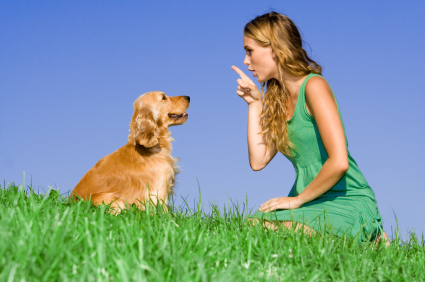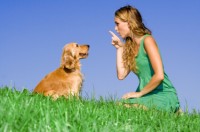Only ever use “come” in connection with a positive experience. If you punish a pup after saying “come” he will run away instead of coming when you call.
 Teach “come” in a quiet, safe place like your backyard or hallway. Start with your pup on lead. Call him when you know he is guaranteed to come anyway, for a meal or a walk. Reward him with treats as soon as he comes.
Teach “come” in a quiet, safe place like your backyard or hallway. Start with your pup on lead. Call him when you know he is guaranteed to come anyway, for a meal or a walk. Reward him with treats as soon as he comes.
Next station two people with treats, one up each end of the yard or hall. Take turns to attract your dog’s attention with his name, clicks or whistles. When he looks toward the caller and you are sure he will come towards the caller only, the caller should command him to “come”. This builds a strong word-action association. The caller should sound excited while the other person remains still and quiet. When he comes show him how pleased you are by saying “good boy” and giving pats and treats.
The next step is to ask him to “sit” when he returns to you. This gives you added control and stops him jumping up on you.
Practise this back and forth, but end before your dog gets bored.
At the next session run a short distance and encourage him to follow. Only move to more challenging locations when you are sure of success. Try on the oval on lead before you try off lead. A long retractable lead or a long piece of rope increases distance and distraction levels but still guarantees his safety and return. Before you allow him off lead he must feel that coming to you is more exciting and rewarding than playing with another dog or chasing a cat.



